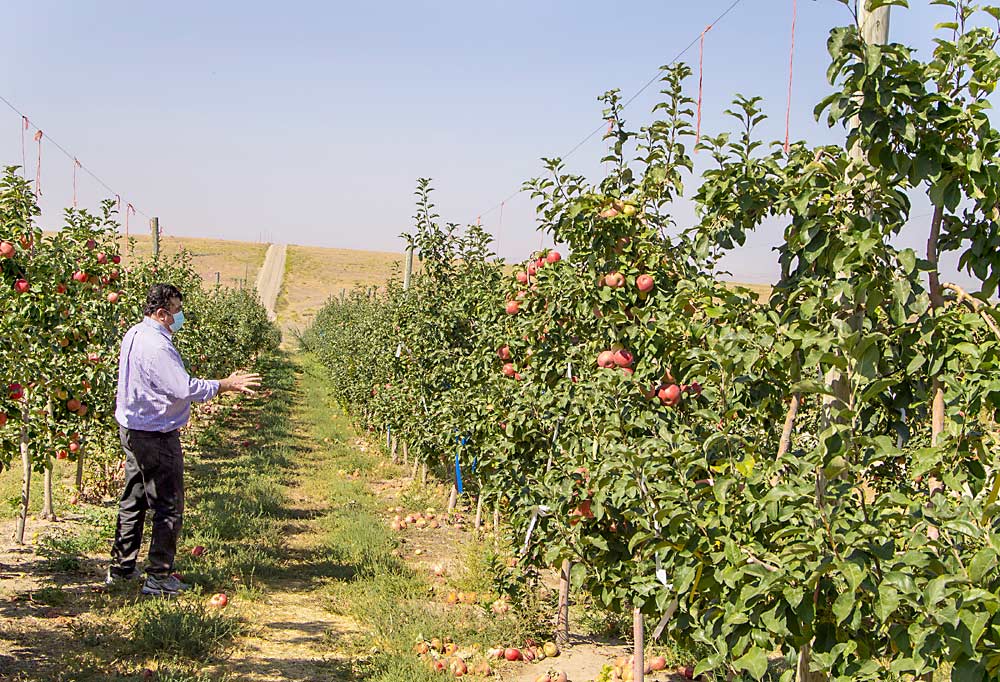
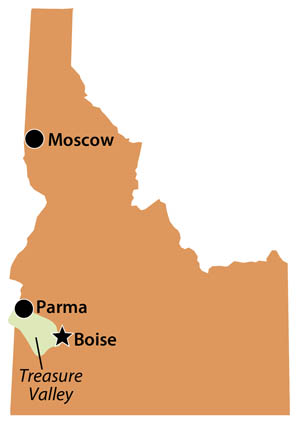
In Southwest Idaho, just west of Boise, lies the prime fruit-growing region known as Treasure Valley. It’s frequently referred to as the state’s banana belt, due to its relatively mild winters. Apple, cherry and stone fruit orchards have grown here for generations, though competition and labor challenges have driven some acreage declines in recent years. There are also growing hop and wine industries, as well as the potato and onion farms for which the state is most known. The University of Idaho’s Parma Research and Extension Center serves this diverse agricultural region, some 300 miles away from the university’s main campus in Moscow.
Idaho’s fruit belt could be seen as an island in a sea of potatoes, grains and beans, the crops for which the state is most known. But thanks in no small part to the research program of longtime pomologist Esmaeil Fallahi, known as Essie, the state also plays an integral role in broad national efforts to answer critical questions about apple rootstocks, canopy systems and crop load management.
Based at the University of Idaho’s Parma Research and Extension Center for the past 32 years, Fallahi’s work is driven both by the regional fruit industry’s needs and by his collaborations with a consortium of researchers across the U.S. who coordinate long-term trials of rootstocks and training systems. The Idaho site provides a key replicate for that research, he said.
“We have a lot of similarities with Washington — this vast area in the West, the high desert with warm summers and long days — so we can confirm or contradict each other in these two locations,” Fallahi said.
Known as NC-140, the federally funded group project serves as a network, connecting researchers on tree fruit topics beyond rootstocks and has spurred collaboration on other research questions, such as how rootstock selection can help growers optimize management, how to mitigate the risk of replant disorder or how to prevent bitter pit in Honeycrisp. (See From root to fruit.)
“NC-140 is like a family for us,” Fallahi said. Through those relationships, his ongoing research into bitter pit helps local growers and fits into the wider industry efforts. Samples from his Honeycrisp trials are shipped to Cornell University and Washington State University for analysis that complements the leaf mineral analysis and respiration work done during storage tests in the Idaho lab.
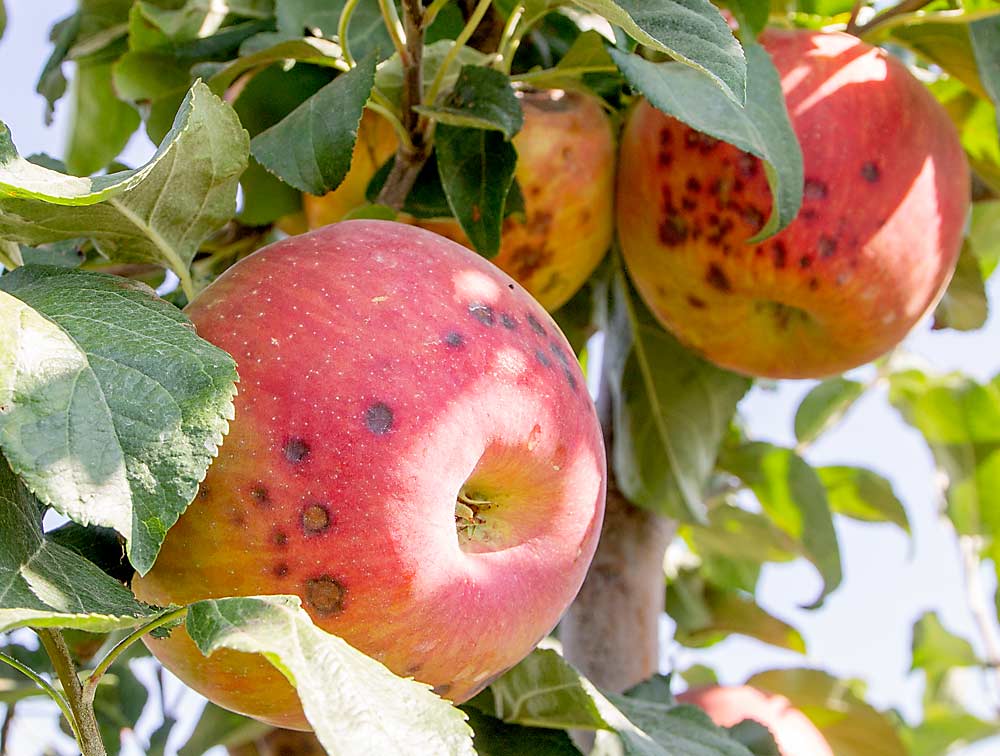
Researchers across the U.S. are working on bitter pit, but the NC-140 community keeps them in conversation and their work complementary, said WSU physiologist Lee Kalcsits, one of Fallahi’s collaborators.
Fallahi’s research keeps Idaho fruit growers connected to cutting-edge ideas in fruit production, too, said fourth-generation grower Jamie Mertz of Symms Fruit Ranch in Caldwell.
“We feel very blessed in Idaho to have him and to have kept him,” Mertz said.
The Parma Research and Extension Center
Over the 32 years Fallahi has worked at the Parma Research and Extension Center, he saw the 15 faculty positions fall to just two: himself and one other. In 2009, as Idaho struggled with recession-era budgets, the university leadership wanted to close the Parma station.
Local growers from across commodities responded quickly, organizing and donating to keep the center open, said third-generation grower Chad Henggeler from Fruitland, who chaired the state’s apple commission at the time.
Now, seven faculty members and a staff of nearly 40, including graduate students, comprise the center. The university is thanking growers for their support by investing in the station again, Fallahi said, including a new $1 million cold storage facility and millions of dollars more planned in upgrades over the next few years.
“Not only did we keep it from getting closed, we’re working on expanding it and modernizing it,” said Henggeler. “It’s uniquely positioned because there’s a lot of crops grown here. It’s diverse, that’s why it’s such a valuable facility.”
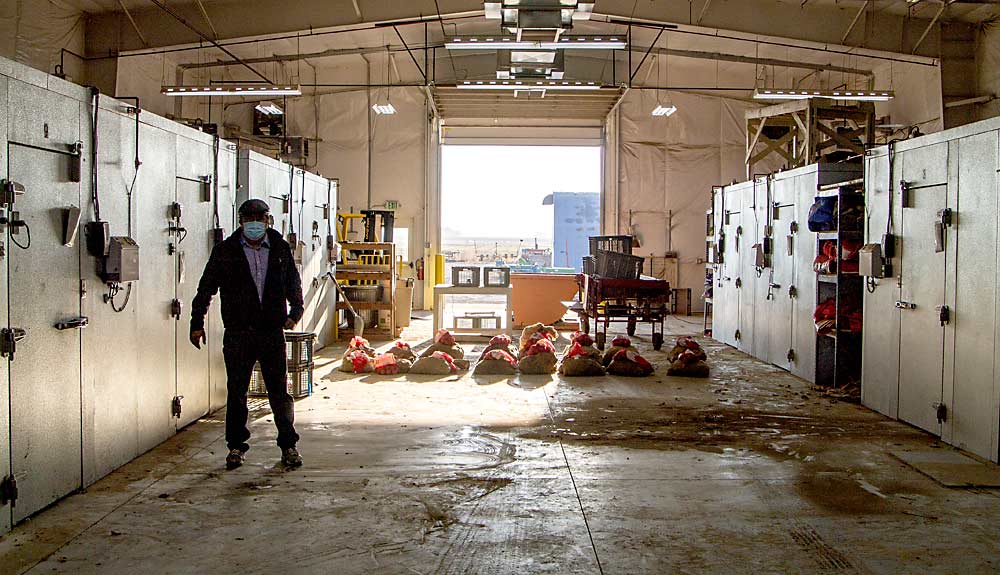
Fallahi’s research orchard sits on 120 acres, planted in a wide range of variety, rootstock and system trials. His years of irrigation research convinced the region’s growers to make the switch to drip, and his variety and rootstock trials help local growers make safer investments in new plantings, Henggeler said.
“When I first started putting in drip 10 years ago, people said it wouldn’t work on fruit trees,” he said, “but I’d seen Essie do it and I’d seen the fruit quality, and so I’ve been modeling my irrigation off of it because I knew it would work.”
That dedication to applied, practical research that growers can implement has been a huge benefit to Idaho’s industry, said Dar Symms, president of Symms Fruit Ranch, and Mertz’s cousin.
“Almost everything he does is directly applicable to our day-to-day farming,” Symms said.
Symms, Mertz and Henggeler all appreciate having access to Fallahi’s variety trials. When looking for new stone fruit cultivars to hit a specific timing window, rather than rely on data from California, they can look over detailed data on how cultivars perform in Fallahi’s trials in their climate.
In addition to the research station orchards, which hold the long-term trial plantings, Fallahi regularly runs research trials in growers’ orchards. It’s a close-knit industry, he said, and growers are always willing to host him.
“I love doing it because if there is a product that is advantageous to use, then I’ve got first-hand knowledge already,” Mertz said, citing a recent collaboration on thinners.
“All our orchards seem like they have Essie’s flags all over them,” Henggeler said.
Battling bitter pit
One of Henggeler’s Honeycrisp blocks, covered in flagging tape, hosts a trial in which Fallahi hopes to find the sweet spot that balances crop load to minimize bitter pit but still hits target fruit sizes.
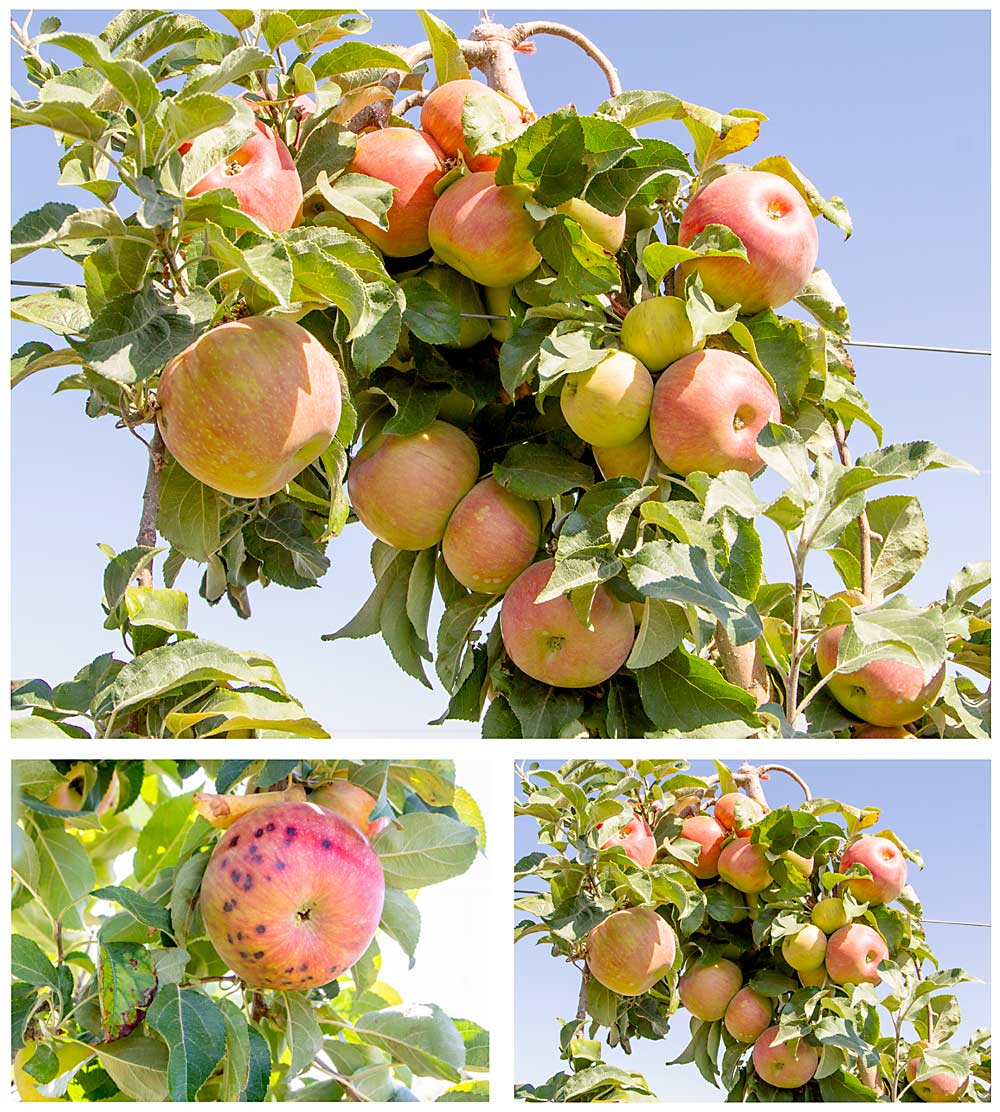
After bloom and chemical thinning, there will still be clusters of Honeycrisp that require hand thinning, Fallahi said. The trial shows that the optimum crop load is one fruit per bunch, unless the spurs are so compact that the fruits would still be touching — as on a very dwarfing rootstock — in which case the spacing should be every other growing point.
Fallahi also looked at the optimum timing for hand thinning.
“We are finding that it is not extremely critical to do this hand thinning as early,” Fallahi said, in reference to Red Delicious or Fuji. “For Honeycrisp, we can wait until the fruitlets are larger without any adverse effect on return bloom. Rather than a small marble, we can wait until it gets to a bigger marble.”
Wait too long, however, and it becomes more challenging to thin the compact clusters without knocking off too many fruit.
Having a little more flexibility with the timing for hand thinning will help him juggle a limited labor supply, Henggeler said.
He also cited labor challenges for the unusual move of chopping off the tops of the trees in the Honeycrisp blocks hosting Essie’s trial. He opted to create a pedestrian system because Honeycrisp harvests occur during a labor crunch; his platforms are tied up by crews picking peaches and plums. Yes, he sacrificed some yield, but the harvest labor savings may make it pencil out, Henggeler said.
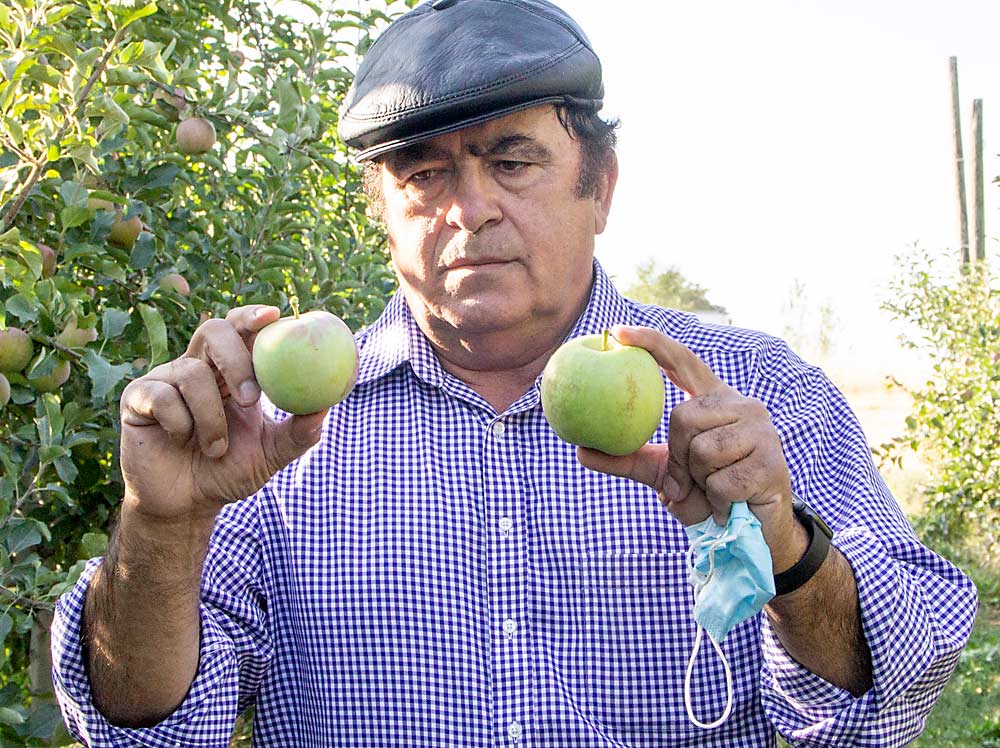
This pedestrian approach is also inspired by a trial Fallahi is conducting at the research station. There, Fallahi chopped off the tops of tall spindle and central leader-trained Fujis planted on Nic.9 and Bud.9 roots.
The fruit in the tops of the trees often doesn’t size as well and is at higher risk for sunburn or bird damage, so Fallahi thinks the reduction in packable yield may not be as high as growers might expect from chopping off the top third of the trees.
Though he wants to get another year of harvest and packout data, Fallahi said he’s “very optimistic” about the pedestrian approach in his research orchard, where he also struggles to find reliable seasonal labor.
“It seems to color better so far, and the fruit size seems better,” he said. “There’s a lot of growers who planted something that ended up too dense and too dark, and they are wondering what to do. Maybe give it a haircut.” •
—by Kate Prengaman

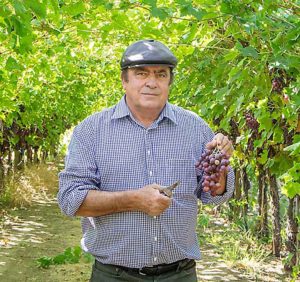





Leave A Comment